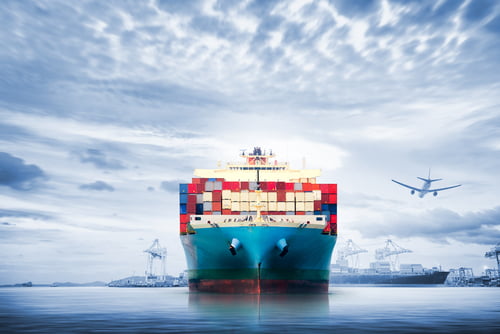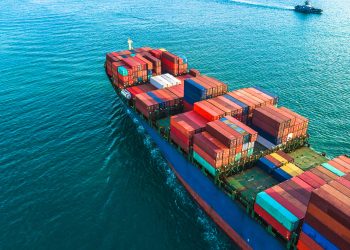Container freight rates will remain elevated throughout most of 2022, says McKinsey, while the containerized logistics disruption persists.
In a recent analysis, McKinsey presents future scenarios that could help shippers in planning and offers levers to navigate through the disruption to emerge stronger.
Global demand growth is moderate
COVID-19 caused substantial fluctuations in containerized goods demand that affected the global containerized logistics supply. Namely, restrictions and shutdowns imposed by most countries early in the pandemic decreased container trade and demand.
Demand recovered in Q3 2020 across the globe, particularly in North America that saw import volumes jump an average of approximately 20% throughout 2021 when compared to 2019. By comparison, global import volumes have grown around 3% when compared to 2019.
Sharp reduction in effective supply, caused by congestion
When China went into lockdown at the beginning of 2020, export volume slumped. Retailers feared a global recession and cut back orders. Ocean carriers responded by cancelling sailings and idling vessels to match the logistics supply with demand. This measure allowed ocean carriers to protect rates from crashing, but it failed to reposition empty containers back to Asia effectively
explains McKinsey.
Once China’s factories restarted, demand for containerized goods recovered by Q3 2020. Container box shortages at export locations increased rates as shippers scrambled to secure access to the limited boxes.
Moreover, lockdowns in North America saw a strong rebound in consumer demand and ocean carriers captured this surge in demand by shifting vessels and container equipment to the Transpacific and Transatlantic trade lanes.
Allocated container vessel capacity on the Transpacific trade lane increased by 31% between January 2020 and December 2021, which is more than three times the growth of the next largest East-West trade lane by capacity, Far East and Europe. Idle capacity, and smaller North-South trade lanes, contributed to vessel and equipment capacity being diverted to North American import-related trade.
Framing the outlook
It is almost impossible to predict exactly when supply chains will normalize. Efforts are being put in place to remedy the situation, however, massive uncertainty remains
added McKinsey, which developed four possible scenarios of rate outcomes. The scenarios were developed by considering drivers of container demand and containerized logistics capacity that form the basis of the current industry and market dynamics.





























































